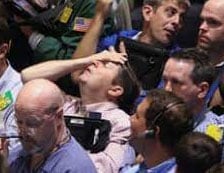Whenever I hear investors utter this all-too-common phrase, I can almost guarantee they’re gonna lose money.
Because anytime someone makes an investment with this seemingly logical argument, it’s usually a positive indicator of two things:
- That they have no idea what they’re buying, and…
- They have no idea what kind of risk they’re really taking.
And sadly, they usually think they have huge upside potential when in reality, they may not.
What is this deadly phrase?
“I only buy stocks that trade below $X per share.”
Now, at first glance, this seems like a logical investment criteria.
If you buy shares of Company A at $1, that means it only needs to go up another $1 to double your investment.
But if you buy shares Company B at $100, it has to go up another $100 to double.
On paper, this sounds like a great “reason why” to invest in things like penny stocks.
The typical sales pitch winds up being “you don’t have to risk a lot, but even small moves could mean big profits”
But have you ever taken a step back and really asked yourself the question…
“What would it REALLY TAKE to double the price of each share?”
And to answer that question, you first need to know what the entire company is worth (also called “Market Cap”).
To do that, you need to multiply the current share price by the number of outstanding shares the company has issued.
Let’s say we have the same “Company A” and “Company B” as before…
Company A
Share Price: $1 per share
Shares Outstanding: 10,000 shares
Market Cap: $1 per share x 10,000 shares = $10,000
Company B
Share Price: $100 per share
Shares Outstanding: 100 shares
Market Cap: $100 per share x 100 shares = $10,000
In this example, both companies are “worth” the exact same amount!
But based on share price alone, many investors would wrongly assume one stock is a “better deal” than the other.
Now, in publicly traded markets, this winds up being less of an issue.
Assuming there’s enough trading volume on the stock, the market does a good enough job of setting correct prices (although this isn’t always the case…).
And if all goes wrong, you have the chance to dump the stock and recoup some of your losses.
But in the private markets, you’re usually looking at a 7-10 year time horizon for growth plays. Or at least a 1-3 year time horizon for any sort of income play (like real estate or peer to peer lending).
Which means before you get lured in by “cheap” share prices in private market deals, it’s crucial to understand how that company is coming up with it’s valuation…
And how you, as the investor, get paid on the deal.
Sincerely,
Jake Hoffberg – Publisher
Equifund













